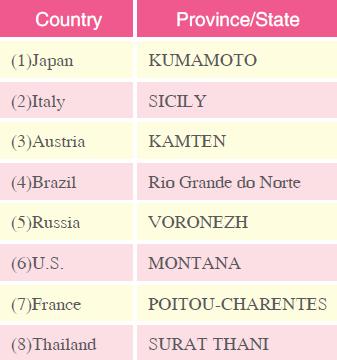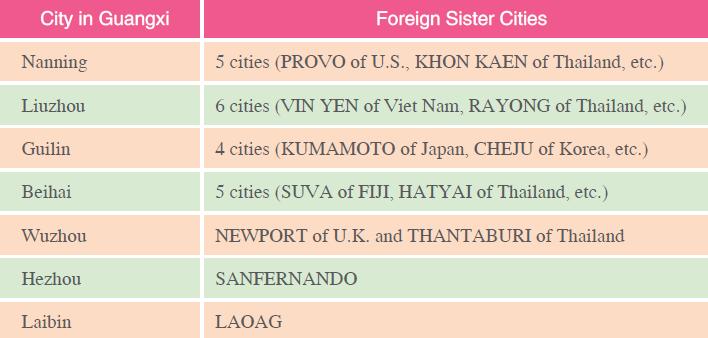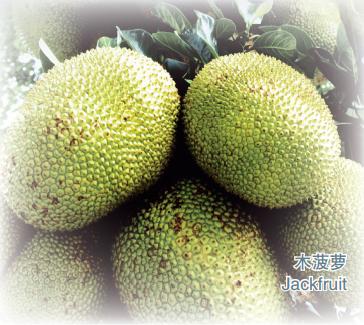Speech by the Chairman of the Autonomous Region
Guangxi has the most convenient land and ocean channels to south-east Asian countries and Pacific countries, many favorable policies and the most diversified and richest natural resources. Since Nanning was chosen as the permanent venue of China-ASEAN Exposition in November 2004, Guangxi has pulled together all the efforts to provide friends in political, business and various circles from China, ASEAN and other countries with service in transportation (customs clearance), exhibition & conference, promotion conference & negotiation and life & tourism. Boosted by the platform effect of China-ASEAN Exposition Guangxi are growing into a promising land foreign and domestic investment. Guangxi people are industrious and simple, they welcome guests with sweet songs. We sincerely welcome guests and merchants to Guangxi to pursue cooperation and win-win possibilities.
Chairman of Guangxi Zhuang Autonomous Region
Lu Bing
Survey
(i) Geographical Location
Located in the south of China, Guangxi sits at 20°54′-26°23′north latitude and 104°29′-112° 04′east longitude. It borders the Beibu Gulf on the south and faces Hainan Province across the sea. To its east situated Guangdong, to the northeast lies Hunan. Guizhou is to the northwest and Yunnan to the west. It borders with Viet Nam to the southwest. The total land area of Guangxi is 236,700 km2, accounting for 2.5% of the national total and ranking the 9th in China. Guangxi administrates 14 prefectures including Nanning, Guilin, Liuzhou, Beihai, etc. Its capital city is Nanning.
Guangxi is a coastal area. The sea area of the Beibu Gulf is about 129,300 km2, with the coastline extending 1,595 km long. 697 islands are distributed along the coast, with a total area of 84km2. Weizhou Island, as the largest island along the coast of Guangxi, covers an area of about 28km2.
(ii) Geographical Strength
Guangxi enjoys favorable geographical strength with direct accesses to sea, river and an international border. Standing at the convergence point of east China, central China and west China of the mainland and the conjunction part of South China Economic Ring, Southwest China Economic Ring and ASEAN Economic Ring, Guangxi serves as the most convenient gateway to the sea and an important passage linking Guangdong, Hong Kong and Macao SARs with west China. With the advance of China-ASEAN Free Trade Area, Guangxi will play a more important strategic role as a communicating hub connecting southwest China, south China, central China and ASEAN markets.
(iii) Climate
The climate in Guangxi subtropical monsoon climate. Summer is long, hot and rainy, while winter is short, warm and dry. The annual average temperature is 21.1℃. July is the hottest month with monthly average temperature of 23-29℃ , and January is the coldest with average remperature of 6-14℃. The annual sunshine duration is 1,396 hours, and annual accumulated temperature of those at and above 10℃ reaches 5,000-8,300 ℃ for 270-340 days of a year. Guangxi witnesses an annual average rainfall of 1,835mm. Fangcheng in south Guangxi, Jinxiu-Zhaoping in central Guangxi, Guilin in northeast Guangxi and Rong’an in northwest Guangxi see most of rainfall with the average of above 1,900mm per year. Whereas Zuojiang Valley and Youjiang Vallley in west Guangxi and basin area in central Guangxi are dry areas whose annual average rainfall is only 1,100-1,200 mm.
(iv) Population and Ethnic Groups
By the end of 2005, the total population of Guangxi had reached 49.25 million. Population density is about 208 per square kilometer. Among the total population, 16.56million are urban residents and 32.69 million are farmers.
As one of the five autonomous regions in China, 12 major ethnic groups, namely, Zhuang, Han, Yao, Miao, Dong, Mulao, Maonan, Hui, Jing, Yi, Shui and Gelao have being living here for generations. Another 25 ethnic minorities also live here. The population of Zhuang is 16.05 million, taking up 84.5% of the total minority population in Guangxi.
(v) Infrastructure and Transportation
Harbor
Three major coastal harbors, namely, Fangchenggang, Beihai and Qinzhou are distributed in Guangxi with a total of 75 berths, among which, 22 are deep-water berths each with a handling capacity of above 10,000 tons. The total berth capacity reaches 31 million tons. All the harbors are well connected with expressways and railways and enjoy rather complete harbor transportation service systems. As one of the 19 coastal hub harbors, Fangchenggang Harbor has 9 berths, each with a capacity of 10,000 tons. Its maximum berth capacity is 30,000 tons.
Road
The total mileage of roads reaches 62,003 km, among which, more than 1,400 km is expressway. At present, the mileage of high grade road is increasing. In addition, second grade or above roads have been accessible to all prefectures within Guangxi. The distance between major cities in Guangxi to Nanning, the capital city, is within 3-4 hours’ drive.
Railway
The railway within Guangxi has extended to 3,236.4 km and has been connected to the three major coastal harbors as well as neighboring provinces including Guangdong, Hunan, Guizhou and Yunnan, and even leading to ASEAN via Viet Nam railway network.
Airport
Guangxi has witnessed the completion of 5 civil airports respectively in Nanning, Guilin, Wuzhou, Liuzhou and Beihai, with 142 domestic and international air routes. In 2005, 31 lines were opened respectively to Hong Kong, Macao, Hanoi of Viet Nam, Fukuoka and Nagoya of Japan, Seoul of Korea, Bangkok of Thailand, Kuala Lumpur of Malaysia, Laoag of the Philippines, Phnom Penh of Cambodia, Yangon of Myanmar and Vientiane of Laos, etc.
Inland Waterway
The mileage of inland waterways in Guangxi reached 5,591 km. Xijiang waterway, with a capacity of 1,000 tons has been successfully completed. It connects Nanning with Guangzhou across the Pearl River Delta Economic Center. This waterway enjoys favorable transportation conditions.
Port
Guangxi has 17 national first-class ports.Of them, 9 are harbors (Fangchenggang, Beihai, Qinzhou, Jiangshan, Qisha, Shitoubu, Wuzhou and Guigang), 5 are inland ports (Dongxing, Friendship Pass, Shuikou, Longbang and Pingxiang) and 3 are airports (Nanning, Guilin and Beihai).
Communication (Post and Telecommunications) Guangxi has been equipped with complete modern communication network covering the whole region. By 2005, there had been 9.312 million fixed-line users, 10.21 million mobile phone users and 1.84 million internet users.
(vi) Foreign Exchanges
Since the adoption of reform and opening up policy more than two decades ago, Guangxi has twinned with 8 foreign provinces/states as sisters. In the order of signing date, they are:

In addition, seven cities, namely, Nanning, Liuzhou, Guilin ,Wuzhou, Beihai, Hezhou and Laibin have established sister relationships with 24 foreign cites.

Exhibition and Event: China-ASEAN Expo
Starting from 2004, the annually held China-ASEAN Expo (CAEXPO) in Nanning, capital city of Guangxi in every November, was proposed by Premier Wen Jiabao at the 7th China-ASEAN Summit on October 8, 2003. The CAEXPO is cosponsored by the Ministry of Commerce of the People's Republic of China and competent business authorities of ASEAN countries and organized by the People’s Government of Guangxi Zhuang Autonomous Region.
Aiming at promoting the establishment of China-ASEAN Free Trade Area and sharing opportunities for cooperation and development, the CAEXPO has the following features: (1) CAEXPO and China- ASEAN Business and Investment Summit (CABIS), held co-incidentally, provides both real business benefits and exchanges and dialogue among government officials, entrepreneurs, scholars and experts. (2) It is not only a grand event for economy and trade, but also a multilateral activity. It will be of great significance to the establishment of China-ASEAN strategic partnership for peace and prosperity and push forward regional economic cooperation between China and ASEAN countries. (3) It is a combination of import and export with import as the mainstay. The opening of ASEAN markets will serve as a bridge for ASEAN commodities to enter China. (4) It is a combination of outbound investment and foreign investment attraction. It will serve as a platform for Chinese enterprises to invest in ASEAN and go global. (5)It is a combination of trade in goods and trade in services. Starting from tourism services and transfer of innovative technology in SMEs, the CAEXPO will foster a new growth point for China-ASEAN business cooperation. (6) A combination of business activities and cultural exchanges. During the EXPO, Nanning International Folk Song Festival, A Gala Celebration, Fashion Show Week and Golf Tournament will also help boost the cultural exchanges between China and ASEAN.
The 1 s t CAEXPO saw a total commodity transaction volume of US$1.084billion, contractual amount of international project of US$4.97 billion, contractual amount of domestic project of US$48.5 billion. Commodity transaction of the 2nd CAEXPO reached US$1.15 billion, contractual amount of international project of US$5.26 billion, contractual amount of domestic project of US$50.2billion. After the success of the first two sessions, CAEXPO has become the nearest channel for more ASEAN commodities to enter China, the best platform for ASEAN enterprises to purchase Chinese products, the optimum bridge for ASEAN to attract investment and advanced applicable technologies from China, an important venue for ASEAN to showcase their tourism attractions for more Chinese tourists and an effective international business event. China-ASEAN Expo has become one of the four major events supported by the Ministry of Commerce of China. This year, held concurrently with the Commemorative Summit Marking the 15th Anniversary of ASEAN-China Dialogue Relations, the third session will surely be more successful and exert much greater impact.
(vii) Higher Education and Science & Technology
Higher Education
Up to the end of 2005, Guangxi had established 58 universities and colleges, 234 authorized master degree programs and 12 doctoral degree programs. The number of college and university students reached 483,600, among which10, 711 are postgraduates.
Science & Technology
By the end of 2005, Guangxi had set up 210 scientific research institutions above county level, among which, 7 were at the national level, 68 at the provincial level and 58 at the county level. By the end of 2005, Guangxi witnessed a registration of 7,038 scientific and technological results, and 2,868 of them won prizes: 1 national first prize, 6 national second prize, 10 national third prize; 3 special contribution award of Guangxi for scientific and technological progress, 48 first prize, 572 second prize and 2,245 third prize at the provincial level. Many of these results have been applied to practice and have made important contribution to Guangxi’s national economic development. Research on buffalo IVF (in vitro fertilization) embryo transfer and fish nucleolus transfer and breeding are of the international leading position. Hybrid rice varieties such and Shan you Gui series, Boyou series and Shanyou 30 are of high yield, high quality and strong adaptability. A combination of early, medium and late ripe varieties has been developed; Guitang 11 sugar variety has been bred which has been applied widely in China.
Patent and IPR
By August, 2006, Guangxi had made 27,834 applications for patents and 15,303 were granted.
(viii) Tourism and Local Products
Tourism
Guangxi is one of the major tourism provinces of China. More than 400 scenic areas and spots have been developed, among which, 3 are national scenic areas, 1 holiday resort and 11 forest parks; other 31 areas and 9 holiday resorts are at the provincial level. The landscapes in Guilin represent the unique natural sceneries featuring with karst land formation which is prevalent across Guangxi; Beihai Silver Beach shows the beautiful sub-tropical coastal scenes; minority ethnic customs and folk cultures are fully demonstrated here by different minorities; Huashan Pictographs, Ling Cannal, Pavillion of Genuine Prowess, Site of the Taiping Heavenly Kingdom Uprising are precious historical relics. Unique border sceneries, attractive landscapes and diversified folk cultures make Guangxi ideal destination for tourists at home and abroad. In 2005, Guangxi received 1.462 million tourists from outside of the mainland China and the tourism revenue reached 2.59364 billion yuan.
Local Products
As one of the major agricultural provinces in China, Guangxi is rich in farm produce, represented by tropical and subtropical fruits such as Lichee, Longan, pineapple, mango, banana, cumquat, Shatian pomelo, TCM crops including tianqi (pseudo-ginseng), amomum fruit, gynostemma pentaphyllum, guo (Fructus Siraitiae Grosvenorii), aquatic products like prawn, tilapia, pearl and oyster and agricultural by-products including vegetables, sugarcane, fiber crops, silkworm, turpentine, tung oil, cassava, aniseed, anise oil, cinnamon, etc. Sugar-making and can tin are flagship industries in agricultural products processing. The output of sugar accounts for more than a half of the national total. Pineapple, green bean, water chestnut tin packets are selling well home and abroad. There are also traditional handcrafts and artistic works such as fireworks, Zhuang embroidery, Yao embroidery, shell carving, knitting, etc.

Doing Business in Guangxi Zhuang Autonomous Region of China:II.Economy
Doing Business in Guangxi Zhuang Autonomous Region of China:III.Investment
Doing Business in Guangxi Zhuang Autonomous Region of China:IV.Development Zones





